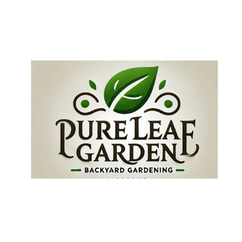Growing a Thriving Herb Garden in Small areas: A Beginner's Guide
learn about growing thriving herb gardens in less than perfective spaces. And follow the peaceful and therapeutic journey of growing a beautiful garden.
3/13/20252 min read
How to Grow a Thriving Herb Garden in Small Spaces
If you love fresh herbs but don’t have a big backyard, don’t worry—you can still grow a lush, thriving herb garden in a small space! Whether you live in an apartment, have a tiny patio, or just want a compact garden, herbs are perfect for small-space gardening. They’re easy to grow, require minimal maintenance, and provide fresh flavors for your kitchen year-round. In this guide, we’ll walk you through everything you need to know to create a successful herb garden in a limited space.
Choosing the Right Herbs for Small Spaces
Not all herbs grow the same way, so choosing the right ones is key. Some herbs thrive in pots, while others may need more space to spread. Here are some of the best herbs for small gardens:
Great for Containers: Basil, parsley, thyme, mint, oregano, rosemary, chives
Perfect for Hanging Baskets: Thyme, oregano, trailing rosemary
Compact and Indoor-Friendly: Chives, mint, cilantro, basil
Pro Tip: Avoid planting mint with other herbs in the same pot—it spreads aggressively and can overtake other plants.
Selecting the Best Containers and Pots
Since space is limited, growing your herbs in containers is the best option. Here are a few container ideas:
Small Pots: Great for single herbs like basil, thyme, or rosemary
Window Boxes: Ideal for a mix of herbs and perfect for kitchen windows
Hanging Planters: A great space-saver for trailing herbs like oregano
Vertical Garden Racks: Use wall-mounted planters or tiered shelving to grow multiple herbs in a small footprint
Tip: Make sure your containers have drainage holes to prevent overwatering, which can lead to root rot.
Finding the Perfect Location
Herbs need plenty of light to thrive. Here’s how to find the best spot for your small herb garden:
Outdoor Gardens: Choose a sunny balcony, patio, or doorstep that gets at least 6 hours of sunlight per day.
Indoor Gardens: Place your herbs on a south-facing window where they get the most light. If natural light is limited, consider using grow lights to supplement.
Preparing the Best Soil for Herbs
Herbs grow best in well-draining, nutrient-rich soil. Here’s how to prepare it:
Use a light potting mix rather than garden soil, which can become too compact.
Add perlite or sand to improve drainage.
Mix in organic compost or slow-release fertilizer for extra nutrients.
Planting and Caring for Your Herbs
Now that you have your containers and soil ready, it’s time to plant!
How to Plant Herbs:
Seeds vs. Starter Plants: If you’re a beginner, start with small herb plants from a nursery for faster results.
Spacing: Give each plant enough room to grow—crowding can lead to poor air circulation and disease.
Watering: Herbs prefer slightly dry soil—water when the top inch of soil feels dry. Avoid overwatering!
Pruning: Regularly trim your herbs to encourage new growth and prevent them from becoming leggy.
Maintaining Your Herb Garden
Fertilizing: Feed your herbs with a mild organic fertilizer (like compost tea or fish emulsion) once a month to keep them healthy.
Pest Control: Herbs are generally resistant to pests, but watch out for aphids and spider mites. A gentle spray of soapy water or neem oil can help.
Indoor Herb Care:
Rotate pots weekly for even sunlight exposure.
Keep plants away from cold drafts or direct heat sources like radiators.
Harvesting and Enjoying Your Herbs
One of the best parts of growing herbs is using them in your cooking! Here’s how to harvest them properly:
Thyme & Oregano: Snip sprigs as needed, but leave some growth for regrowth.
Chives: Trim them down to about 2 inches to keep them growing strong.
Fresh herbs can be used immediately, dried for later use, or even frozen in olive oil for easy cooking.
Sustainability
Eco-friendly supplies for nurturing your garden.
Cultivating
© 2025. All rights reserved.
